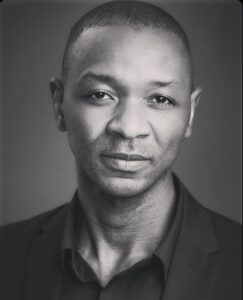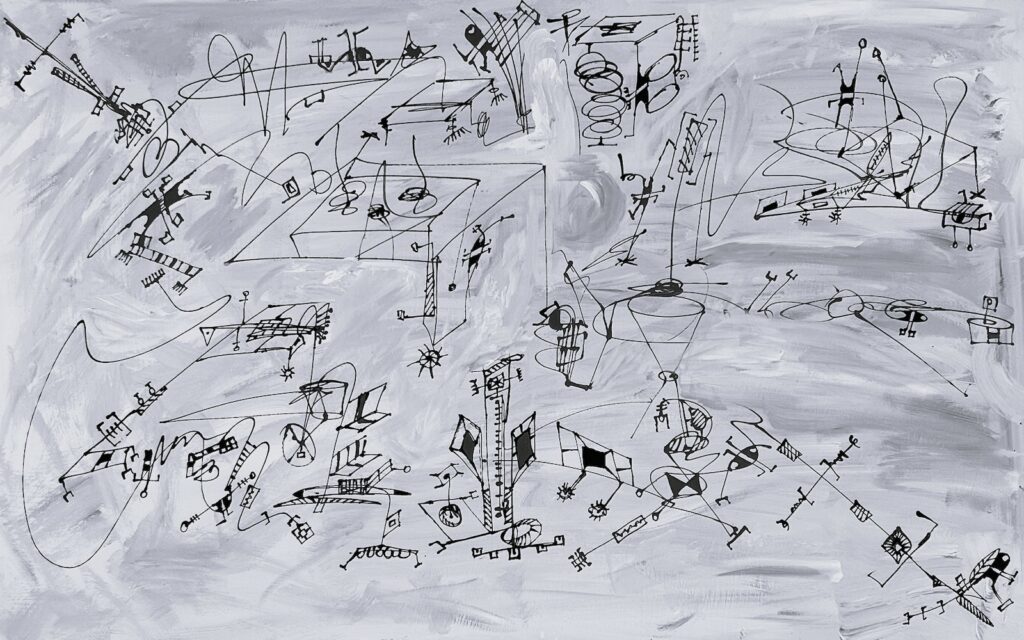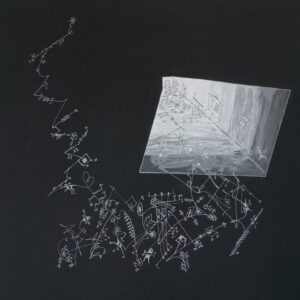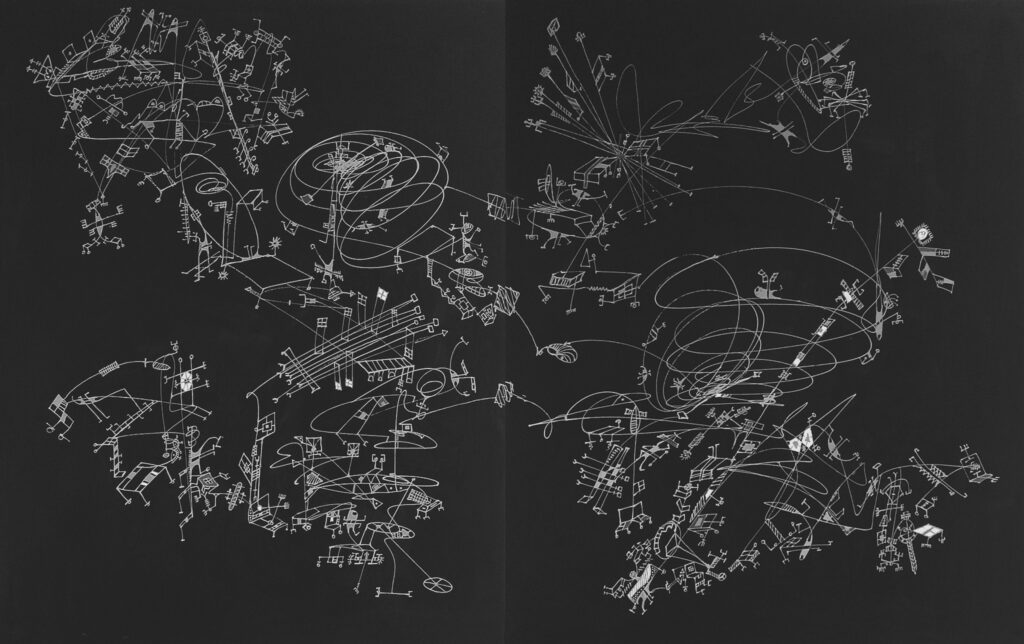
You started painting while studying philosophy in 2003. What inspired you to begin painting during this time?
I started drawing while being confronted with the questions of meaning in my philosophy studies. My drawings were non-figurative; I showed some of them to my metaphysics teacher, a French monk. He gave me some names to check at the library: Kandinsky, Klee, Mondrian. I discovered the abstract Art Movement, and this triggered a series of compulsive gouaches that I made on paper. I used gouache for many years while drawing with dry ink (ballpoint pen). I sold a few gouaches works to friends and the university’s library where I did some shows as well. In 2008, I was selected for a young artist residency in Douala, and I moved to Acrylic on canvas.
What motivated your move to Canada, and how did this transition impact your artistic journey?
I applied for the permanent residency in Canada and it worked. In this new environment, I have been exposed to deep loneliness, that benefited me inwardly for my artistic process: for instance, the Monochrome series is a place I wasn’t comfortable to go, but now I have experienced the richness I can express in such area.

Kandinsky’s intuition of an independent abstract system has nurtured your work. Can you discuss how his ideas have influenced your approach to abstract art?
Kandinsky speaks about the “Inner need” in his book Concerning the spiritual in Art, this expression touched me as a motivation in seeking and using non-figurative language to display and connect emotions. Also, Kandinsky relies on the analogy with music that has an independent abstract language to be translated in to painting. This second point also resonated with me as music play an important role in my process.
 How do you integrate the ornamental curves found in tribal African sculptures and masks into your abstract compositions?
How do you integrate the ornamental curves found in tribal African sculptures and masks into your abstract compositions?
The mind is informed of symbols, shapes, and curves from memories collected in ornamental images I have seen back home in Cameroon (in masks, cloth of traditional garments…), some of the books I have reviewed, for instance, the beautiful Hieroglyphic scriptures that many African thinkers have documented or the writing invention of the Bamum kingdom in Cameroon. My interest has even extended to Chinese and Arabic calligraphy sophistication. My focus is on the original act of generating the signs before they are assigned a functional meaning. Even the alphabetic signs we are using right now have an inalienable visual aspect that has been diluted by the functionality of written and spoken language. I approach the signs for what they are, unassigned by function.
How do you see your work evolving in the future, and what new projects or themes are you excited to explore?
In my website, I noted that the Monochromes Series we see is in its preamble. I am still working on finishing that and then we may see what the future brings.

What advice would you give to aspiring artists who are trying to navigate their own artistic journeys?
We should always be ourselves.
Website

Zola S.
Your art is so profound as you seem to be, you are a true artist of precision. “Magnum opus,” if you will. I just learn that one, because I’m not well crafted as others in the world of art. I call my art dappling. You are the real Mccoy! Love this piece! Z.